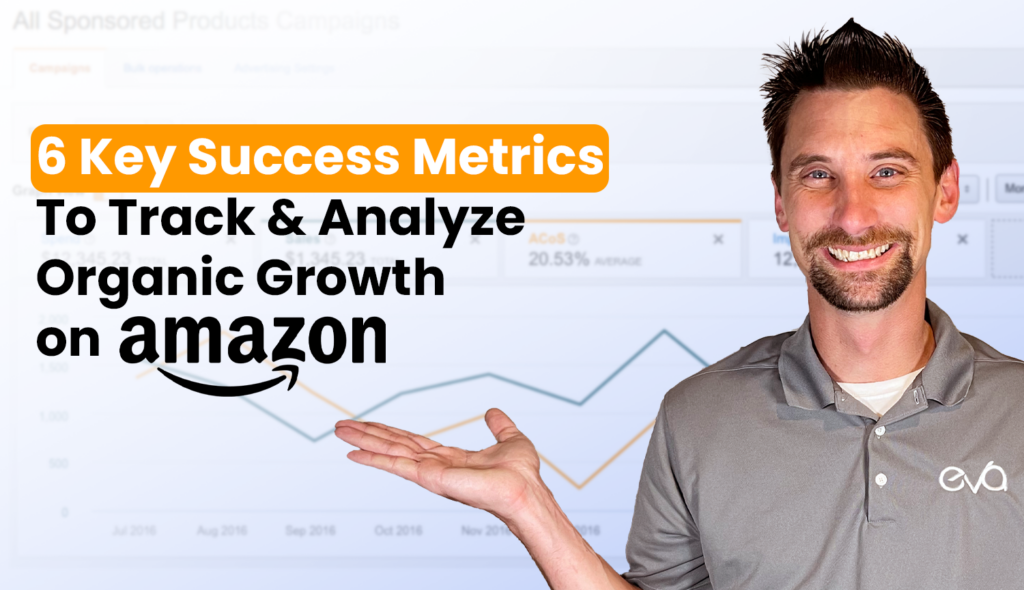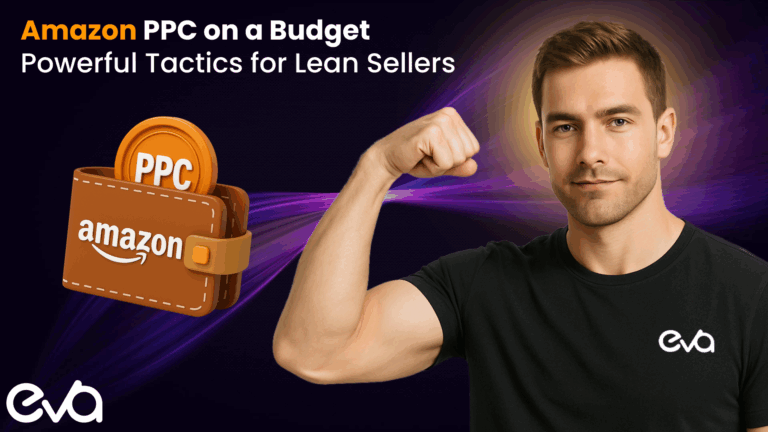Attention Amazon sellers and aspiring entrepreneurs! This power-packed blog unveils the six crucial success metrics that will transform your organic growth on Amazon.
From tracking sales revenue to dominating search rankings, these game-changing metrics hold the key to unlocking untapped potential.
Get ready to take action, track, and analyze your way to organic growth mastery!
Table of Contents
Metric 1: Conversion Rate (CR)
What Is Conversion Rate (CR)?
Conversion Rate (CR) is a crucial metric to track when measuring organic growth on Amazon. It represents the percentage of visitors who purchase after viewing your product listing.
Understanding and optimizing your conversion rate is essential because it directly impacts your sales and overall success on the platform.
A higher conversion rate means that you are effectively converting potential customers into buyers, resulting in increased revenue and improved organic visibility.
On the other hand, a low conversion rate indicates that there may be barriers preventing customers from making a purchase, such as poor product presentation or pricing issues.
By analyzing CR, you gain valuable insights into the effectiveness of your product listings, allowing you to identify improvement areas and implement targeted growth strategies.

Factors Influencing Conversion Rate On Amazon
First and foremost, product presentation plays a significant role. High-quality product images that accurately represent your product, along with engaging and informative product descriptions, are key to capturing the attention of potential buyers.
Take the time to invest in professional product photography and write compelling copy that highlights the unique features and benefits of your product.
Additionally, pricing competitiveness is crucial. Research your competitors’ pricing strategies and ensure that your prices are attractive to customers while still maintaining profitability.
Positive customer reviews and ratings also significantly influence conversion rates. Encourage satisfied customers to leave reviews and actively manage your reputation by promptly addressing any negative feedback.
By monitoring and addressing these factors, you can optimize your product listings and increase your chances of converting browsing customers into satisfied buyers.
How To Improve Conversion Rate & Optimize Product Listings
Conduct thorough keyword research and incorporate high-performing keywords into your titles, bullet points, and product descriptions.
By aligning your product listing with relevant search terms, you increase the likelihood of appearing in search results and attracting the right audience.
Craft compelling, benefit-driven copy that resonates with your target audience, highlighting unique selling points and addressing customer pain points. Use language that communicates your product’s value and the problems it solves.
Enhance your product images, ensuring they are high-resolution, visually appealing, and showcase your product from different angles. Consider including lifestyle images that demonstrate the product’s use and benefits in real-life scenarios.
Moreover, leveraging enhanced brand content, A+ content, and videos can provide potential buyers with an immersive and informative shopping experience, leading to higher conversion rates.
These additional content options allow you to showcase your brand story, demonstrate product features in detail, and build trust with customers.
How To Track & Analyze The Conversion Rate

Amazon’s own Seller Central offers valuable data, such as the Unit Session Percentage (USP), which shows the conversion rate for each listing.
Utilize analytics platforms like Helium 10 to gain in-depth insights into your conversion rate, benchmark against competitors, and track your performance over time.
These tools provide valuable data on customer behavior, keyword rankings, and marketplace trends. A/B testing can also be a powerful technique, allowing you to experiment with different product images, titles, or descriptions to determine which variations drive the highest conversion rates.
For example, you can create two variations of your product listing and direct equal traffic to both versions. Analyze the results to identify which elements resonate better with your target audience and yield higher conversion rates.
This way, you can monitor your conversion rate closely, identify areas for improvement, and implement data-backed strategies to boost your organic growth on Amazon.
Remember, mastering conversion rate optimization is an ongoing process. Continually analyze your metrics, iterate on your strategies, and stay attuned to market trends and customer preferences.
Actively monitor your competition, seek customer feedback, and make data-driven adjustments to your product listings.
Metric 2: Click-Through Rate (CTR)
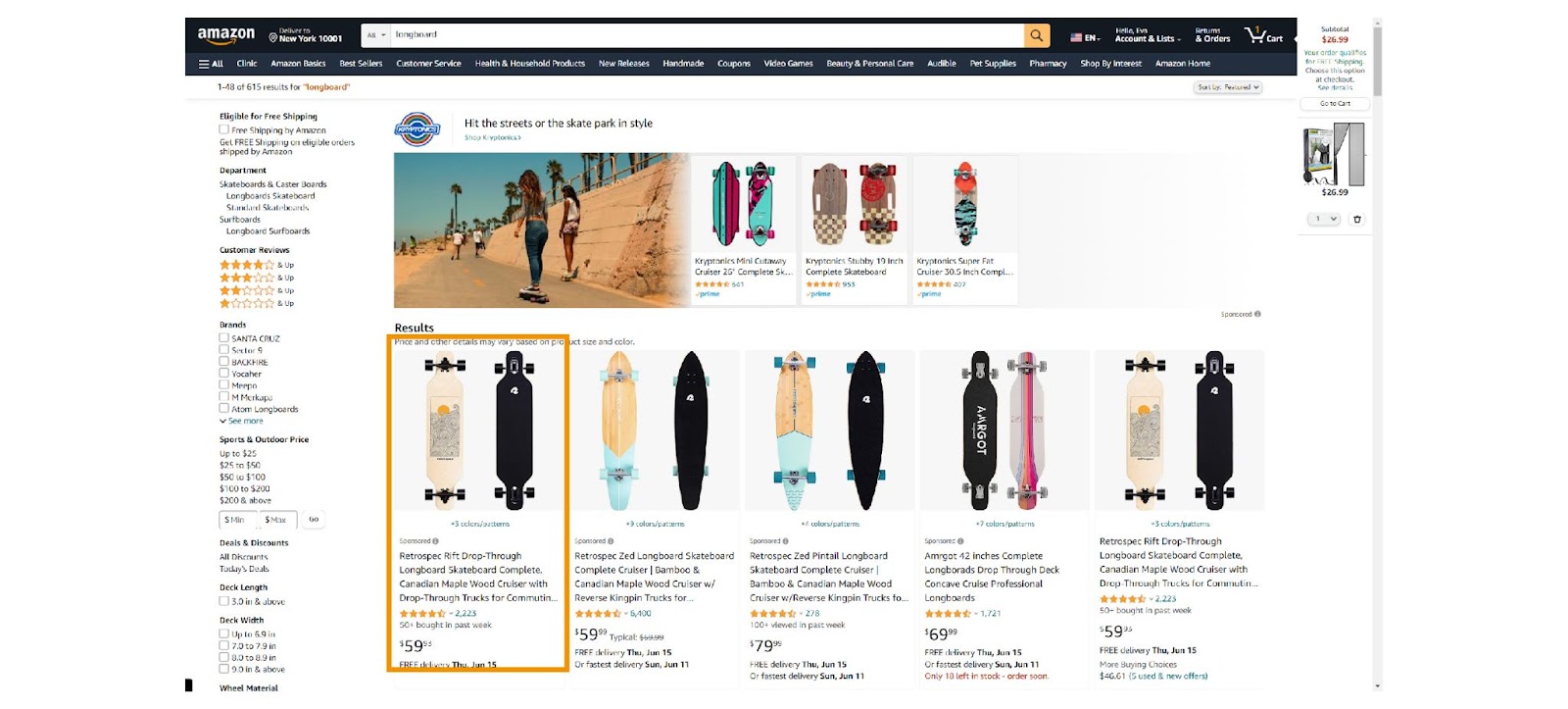
Click-Through Rate (CTR) is a vital metric to track when measuring organic growth on Amazon.
It measures the percentage of users who click on your product listing after viewing it in search results. Understanding CTR and its impact on organic growth is crucial because it directly influences the visibility and discoverability of your products.
A higher CTR indicates that your product listing is compelling and relevant to potential customers, increasing the chances of conversions and organic sales.
By analyzing CTR, you gain valuable insights into the effectiveness of your product presentation and your ability to attract customers in a highly competitive marketplace.
How To Optimize Product Titles, Images & Descriptions To Improve CTR
Start with your product titles, ensuring they are concise, informative, and optimized with relevant keywords.
Craft titles that capture the attention of shoppers, clearly convey the unique selling points of your product, and align with customer search queries.
For example, instead of a generic title like “Bluetooth Headphones,” consider a more specific and compelling title like “Wireless Noise-Canceling Bluetooth Headphones with 40-Hour Battery Life.”
Next, focus on optimizing your product images. High-quality, visually appealing images that accurately represent your product can significantly impact CTR. Use professional product photography, showcase different angles, and highlight key features.
Consider including lifestyle images that demonstrate how your product can be used in real-life scenarios. For instance, if you’re selling a fitness tracker, include images of people wearing the tracker while engaging in various activities like running, swimming, or cycling.
Additionally, optimize your product descriptions by writing persuasive and informative copy. Clearly communicate your product’s benefits and value, addressing customer pain points and emphasizing what sets it apart from competitors.
Use bullet points to highlight key features and ensure easy readability. Consider using customer testimonials or social proof to build trust.
Remember to focus on benefits rather than just features. For example, instead of simply stating the features of a blender, highlight how it can help users prepare nutritious smoothies quickly and effortlessly.
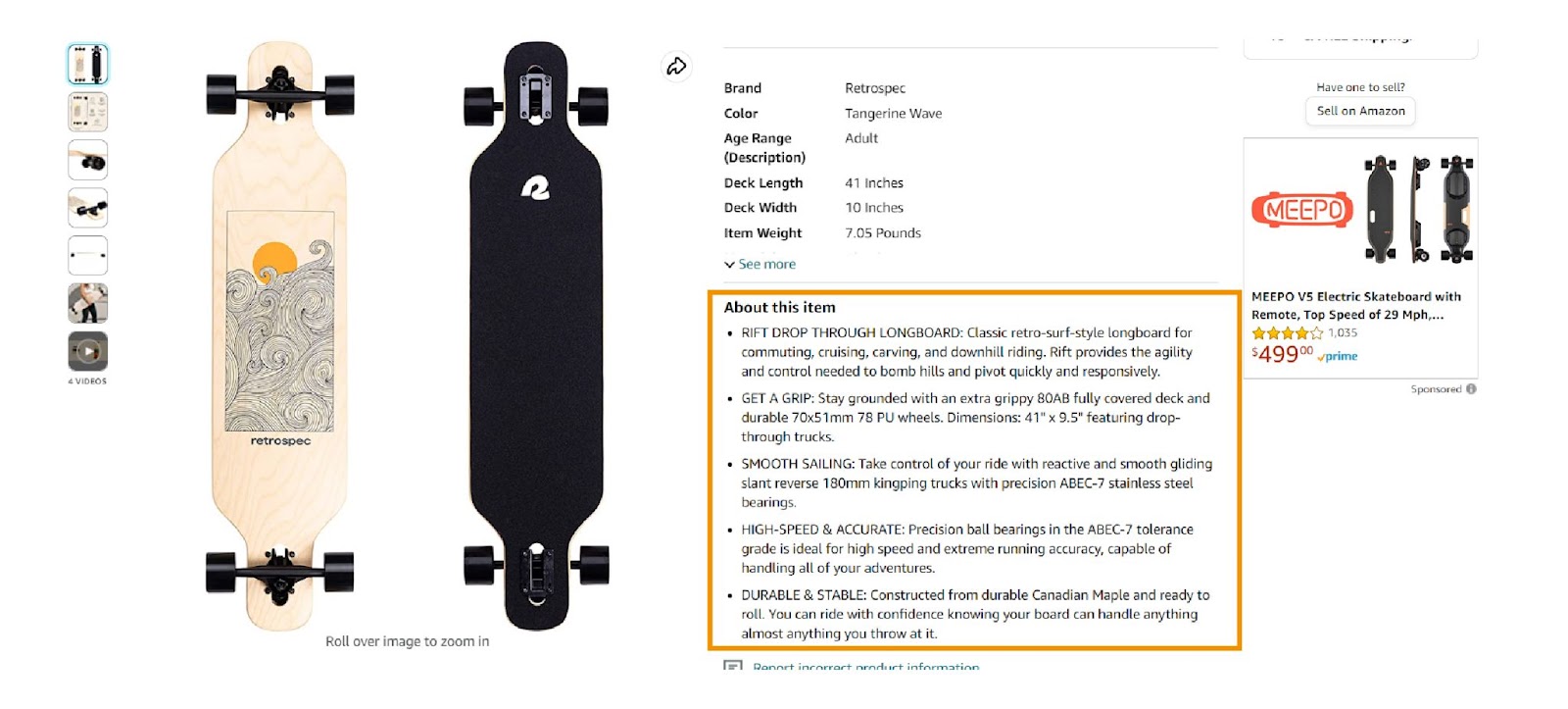
Use Sponsored Ads To Increase CTR
Sponsored ads allow you to target specific keywords, product categories, or customer segments, ensuring your products appear prominently in search results and related listings.
By running strategic sponsored ad campaigns, you can increase the visibility of your products, driving more traffic and potential conversions.
Optimize your sponsored ad campaigns by identifying high-converting keywords, monitoring performance, and making data-driven adjustments to maximize CTR and ROI.
Amazon Marketing Services (AMS) provides additional opportunities to increase CTR through various advertising options, such as headline search ads, product display ads, and video ads.
These ad formats enable you to showcase your products creatively and capture the attention of potential customers.
For example, using a captivating headline and engaging imagery in your headline search ads can entice shoppers to click through to your product listing.
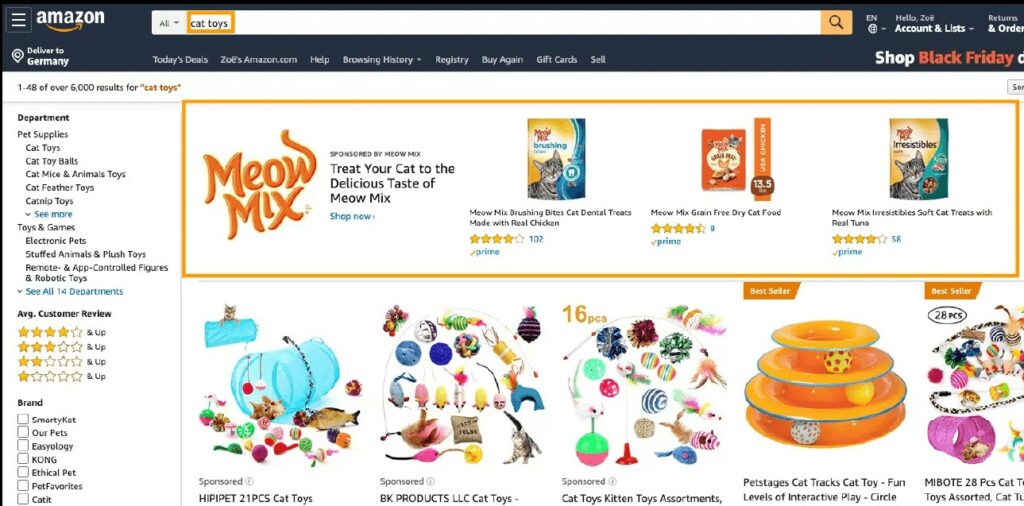
How To Analyze & Monitor CTR
Amazon offers advertising and analytics tools within Seller Central to track and analyze CTR. Utilize the Advertising Reports section to access performance data for your sponsored ad campaigns, including CTR metrics.
Monitor the performance of your ads, identify top-performing keywords and placements, and optimize your campaigns accordingly to improve CTR.
Additionally, leverage the Business Reports section in Seller Central to gain insights into organic search terms and their corresponding CTR.
Analyze this data to identify high-performing keywords driving organic traffic and adjust your product listings accordingly.
Regularly monitor the performance of your listings, experimenting with different strategies to enhance CTR and drive organic growth.
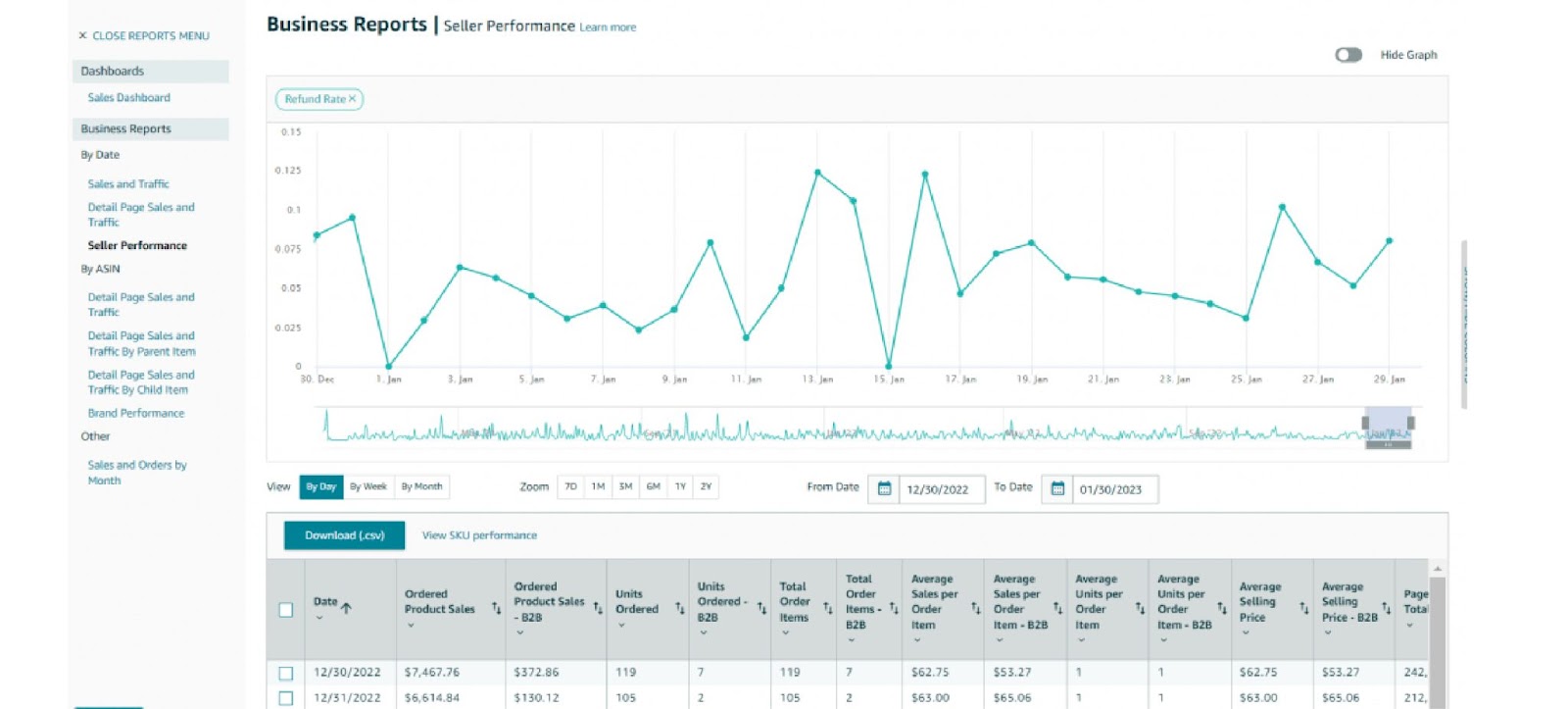
Metric 3: Customer Reviews & Ratings
Customer Reviews and Ratings play a pivotal role in driving organic growth on Amazon. They serve as social proof and influence the purchasing decisions of potential customers.
Positive reviews and high ratings establish credibility, build trust, and increase the chances of conversion.
In the highly competitive Amazon marketplace, a strong collection of positive reviews can significantly enhance your product’s visibility and organic growth.
Conversely, negative reviews can have a detrimental impact on sales and organic visibility.
Understanding the significance of customer reviews and ratings allows you to harness their power to drive organic growth and establish a solid reputation on Amazon.
How To Encourage Positive Reviews & Manage Negative Feedback
Firstly, provide exceptional customer service to create positive buyer experiences. Promptly address customer inquiries, resolve issues proactively, and go the extra mile to exceed expectations.
By delivering outstanding service, you increase the likelihood of receiving positive reviews.
Encourage customers to leave reviews by including a personalized note in the package or a follow-up email expressing gratitude for their purchase and kindly requesting feedback.
However, be cautious about Amazon’s policies on incentivized reviews and ensure compliance with their guidelines.
Managing negative feedback is equally crucial. Monitor your product listings regularly and promptly respond to negative reviews.
Approach these situations with empathy, professionalism, and a willingness to resolve any concerns.
By addressing negative feedback publicly, potential customers can see you are actively engaged and committed to customer satisfaction.
Aim to turn negative experiences into positive ones by providing solutions, replacements, or refunds where appropriate. By demonstrating your dedication to customer happiness, you can mitigate the impact of negative reviews on your organic growth.
How To Use Review Analytics To Enhance Product Visibility
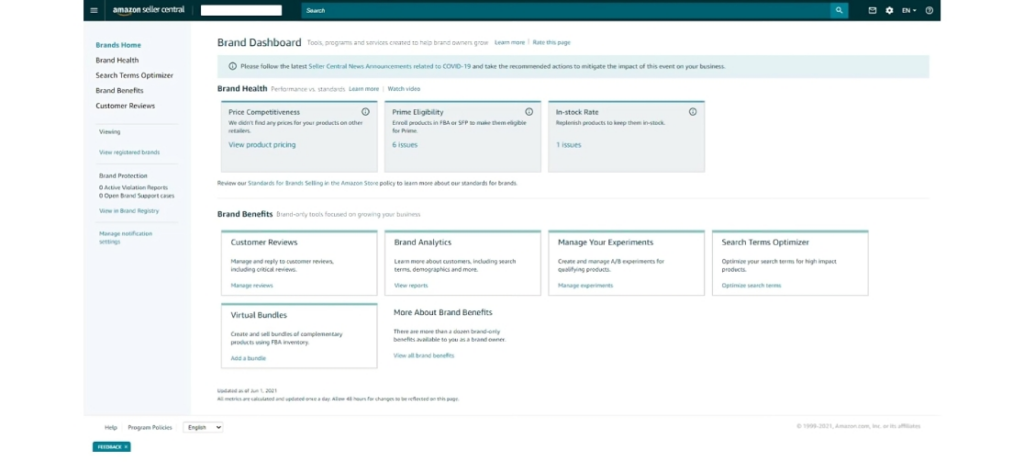
Amazon provides tools and analytics within Seller Central to track review metrics, including review counts, average ratings, and review sentiment analysis.
Analyze this data to identify trends, identify areas for improvement, and understand customer sentiments related to your products.
For example, suppose you notice that customers consistently praise the durability of your product in their reviews. In that case, you can highlight this feature in your product descriptions and use it as a unique selling point.
Leverage positive reviews by featuring them in your product listings, particularly those that highlight key selling points or address common customer pain points.
This can boost customer confidence and encourage more conversions. Additionally, consider using review management software or services to streamline the review monitoring process and gain access to advanced analytics.
These tools can help you track review trends, analyze sentiment across multiple products, and gather insights to drive strategic decision-making.
How To Use Customer Feedback To Iterate & Improve Product Offerings
Analyze reviews for constructive feedback and identify areas where enhancements can be made.
Consider common suggestions or complaints and use them as insights for product development or updates.
Engage with your customers through Amazon’s messaging system or follow-up emails to gather specific feedback, suggestions, or feature requests. By incorporating customer input, you demonstrate a commitment to continuous improvement, increase customer satisfaction, and foster long-term organic growth.
Regularly evaluate customer reviews and ratings to identify opportunities for product enhancements or new product ideas. This iterative approach based on customer feedback enables you to stay relevant, meet evolving customer needs, and gain a competitive edge.
For instance, if customers consistently mention the need for better packaging, you can invest in improving your product’s packaging to enhance customer satisfaction and reduce the likelihood of negative reviews.
Metric 4: Buy Box Percentage (BBP)
The Buy Box is more than just a placement on a product listing page—it’s a gateway to success on Amazon. Winning the Buy Box means that your product is the preferred choice for customers, leading to higher visibility, increased sales, and improved organic growth.

Consider this: studies show that around 82% of sales on Amazon are made through the Buy Box. It’s a powerful tool that helps you stand out from the competition and establish trust with customers. By winning the Buy Box, you gain a competitive advantage that can significantly impact your bottom line.
For example, let’s say you’re selling a popular electronic gadget. When a customer searches for that gadget on Amazon, they will see multiple sellers offering the same product.
However, only one seller will be featured in the Buy Box, making it the default option for customers to make a purchase.
Customers are more likely to choose the seller in the Buy Box because it’s convenient, trustworthy, and provides a seamless buying experience.
As a result, winning the Buy Box allows you to capture a larger share of the market and drive organic growth.
4 Key Factors Influencing The Buy Box Percentage
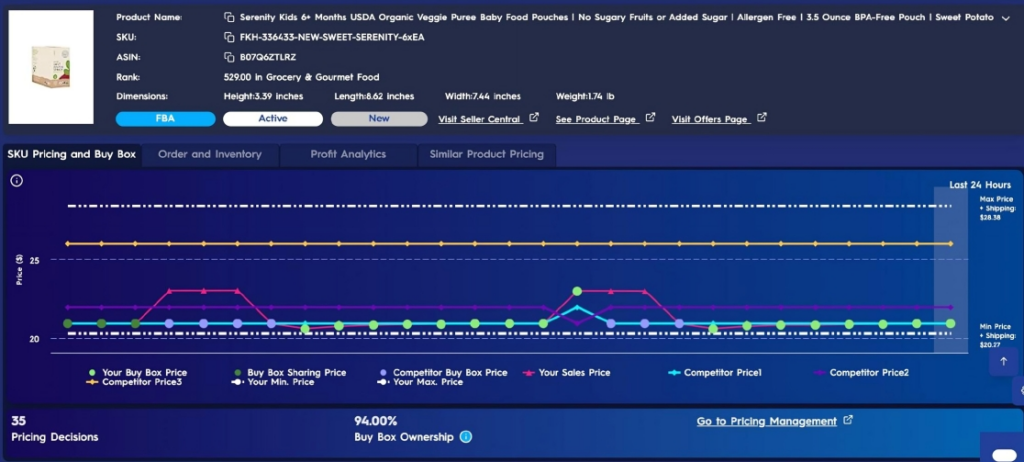
To increase your Buy Box percentage, you need to understand the factors that influence its allocation. While price is an important factor, it’s not the only consideration. Amazon’s A10 algorithm takes into account various metrics to determine the most reliable and customer-focused sellers. Here are some key factors that influence the Buy Box percentage:
1. Seller performance metrics: Amazon evaluates your performance based on metrics such as feedback ratings, order defect rate, shipping speed, and order cancellation rate. Maintaining high-quality seller metrics demonstrates your commitment to delivering exceptional customer service, which increases your chances of winning the Buy Box.
2. Fulfillment method: Amazon favors sellers who utilize FBA due to its reliable and efficient fulfillment services.
FBA sellers benefit from faster shipping, hassle-free customer service, and Prime eligibility. By leveraging FBA, you enhance the overall customer experience, making it more likely for Amazon to award you the Buy Box.
3. Inventory availability: Keeping your inventory consistently available is crucial for Buy Box ownership. Sellers with stockouts or long shipping times are less likely to win the Buy Box.
Maintain a healthy inventory level and utilize inventory management tools to forecast demand accurately. This way, you can meet customer expectations and increase your Buy Box chances.
4. Pricing competitiveness: While price is not the sole determinant, it plays a significant role. Ensure your product prices are competitive within your market segment.
Regularly monitor competitor pricing and adjust your prices accordingly. However, avoid engaging in a race to the bottom, as it may erode your profitability.
How To Increase Buy Box Ownership & Boost Organic Growth
Now that you understand the factors influencing the Buy Box, let’s explore actionable strategies to increase your Buy Box ownership and drive organic growth:
1. Optimize your seller performance: Focus on maintaining excellent seller metrics. Minimize order defects by carefully inspecting and packaging products.
Respond promptly to customer inquiries and resolve issues with empathy. Ship orders on time and provide exceptional customer service.
By consistently meeting and exceeding performance standards, you enhance your chances of winning the Buy Box.
2. Leverage FBA to your advantage: Utilize Amazon’s FBA service to benefit from their robust fulfillment network. This ensures fast and reliable shipping, which is highly valued by Amazon and customers alike.
With FBA, you can also offload customer service tasks to Amazon, allowing you to focus on growing your business and improving your products. By leveraging FBA, you not only increase your Buy Box ownership but also improve customer satisfaction and loyalty.
3. Optimize your product listings: Invest time in creating compelling and informative product listings. Use high-quality product images
that showcase your items from multiple angles. Craft persuasive and accurate product descriptions that highlight unique features, benefits, and specifications. Additionally, utilize bullet points to summarize key selling points.
By optimizing your product listings, you can attract more clicks and conversions, leading to increased Buy Box ownership.
4. Monitor competitor strategies: Keep a close eye on your competitors who frequently win the Buy Box. Study their pricing strategies, fulfillment methods, and customer service practices. Identify areas where you can differentiate yourself and offer a better value proposition.
For example, if competitors are lacking in customer support, focus on providing exceptional support to gain an edge. By continuously analyzing your competitors’ tactics, you can refine your own strategies and increase your Buy Box ownership.
How To Monitor BBP Using Amazon Seller Central And Third-Party Tools
To effectively monitor your Buy Box Percentage (BBP) and make data-driven decisions, utilize Amazon’s Seller Central and third-party tools:
1. Amazon’s Seller Central: Seller Central provides valuable insights into your performance, including your Buy Box ownership percentage. Use the performance reports to monitor changes in your Buy Box ownership over time.
Analyze the impact of different factors, such as pricing adjustments or fulfillment method changes, on your Buy Box performance. Regularly review these reports to identify areas for improvement and implement strategies to increase your Buy Box ownership.
2. Third-party tools: Consider leveraging third-party tools to gain additional insights and advanced analytics on your Buy Box performance.
Tools such as Eva or Helium 10 offer features specifically designed to track and monitor your Buy Box percentage. They provide comprehensive data on competitor analysis, market trends, and pricing strategies.
Utilize these tools to gain a deeper understanding of your Buy Box performance, identify opportunities for improvement, and optimize your strategies accordingly.
Metric 5: Customer Lifetime Value (CLTV)
Customer Lifetime Value (CLTV) is a critical metric that goes beyond measuring individual transactions. It considers the entire customer relationship, including repeat purchases, upsells, and referrals.
By understanding CLTV, sellers can make informed decisions to maximize organic growth and profitability. Here are some additional insights to consider:
– CLTV helps you identify the most valuable customer segments. By analyzing CLTV across different customer segments, you can identify which segments generate the highest revenue and focus your marketing efforts accordingly.
For example, suppose you discover that customers who purchase high-end electronics have a significantly higher CLTV than other segments. In that case, you can allocate more resources to target and retain these customers.
– CLTV guides your pricing and discount strategies. By knowing the value a customer brings over their lifetime, you can determine the optimal pricing strategy and identify opportunities for discounts or promotions.
For instance, if a customer with a high CLTV is considering a repeat purchase, offering a personalized discount can incentivize them to make the purchase and potentially increase their CLTV even further.
[Image of happy customer holding an Amazon box]
How To Increase CLTV Through Upselling & And Cross-Selling
Upselling and cross-selling techniques can significantly impact CLTV. Here are some tactics to consider:
– Bundle complementary products: Create bundles or kits that combine related products and offer them at a discounted price compared to purchasing each item individually. This encourages customers to buy multiple items, increasing the average order value and CLTV.
For example, if you sell fitness equipment, you can create a bundle that includes a yoga mat, resistance bands, and a water bottle.
– Personalized recommendations: Leverage customer data to provide personalized product recommendations based on their purchase history and preferences.
Use machine learning algorithms or recommendation engines to suggest relevant products automatically. This increases the chances of cross-selling and encourages customers to explore additional offerings, thereby boosting CLTV.
Use Customer Data & Segmentation For Personalized Marketing
To leverage customer data and segmentation effectively, consider the following:
– Segmentation based on purchase behavior: Analyze customers’ purchase frequency, average order value, and product preferences to create segmented lists.
For example, you can create segments for frequent buyers, high spenders, or customers who have purchased specific product categories.
Tailor your marketing messages and promotions to each segment, highlighting relevant products or exclusive discounts to encourage repeat purchases and increase CLTV.
– Retargeting campaigns: Utilize retargeting campaigns (Amazon DSP for example) to reach out to customers who have shown interest in your products but haven’t made a purchase.

By displaying personalized ads to these customers across various online platforms, you can remind them of their previous interest and entice them to make a purchase, thereby extending their CLTV.
How To Track CLTV For Long-Term Growth
To effectively track CLTV and analyze customer behavior, consider the following actions:
– Use advanced analytics tools: Leverage analytics tools like Google Analytics, customer relationship management (CRM) systems, or third-party platforms that integrate with Amazon to gain deeper insights into customer behavior.
These tools provide valuable metrics such as customer acquisition cost, customer lifetime revenue, and churn rates, enabling you to track CLTV accurately.
– Implement customer surveys and feedback mechanisms: Gather feedback from customers to understand their preferences, pain points, and areas for improvement. Use surveys, email follow-ups, or review platforms to collect this information.
Analyze the feedback and make necessary adjustments to your products or services to enhance customer satisfaction, retention, and, ultimately, CLTV.
– Implement loyalty programs: Develop a loyalty program that rewards customers for their continued engagement and purchases.
Offer exclusive perks, discounts, or early access to new products to incentivize repeat purchases and foster loyalty. By rewarding and acknowledging your most valuable customers, you increase their satisfaction, strengthen their loyalty, and extend their CLTV.
Metric 6: Organic Traffic & Sales
Organic traffic refers to the visitors who land on your Amazon product listings through non-paid channels such as search engine results, suggested products, or direct browsing.
Understanding and analyzing organic traffic sources and channels on Amazon is essential for measuring organic growth. Here’s how you can delve deeper into this metric:
– Search engine traffic: Analyze the keywords and phrases that drive organic traffic to your product listings. Use keyword research tools and Amazon’s search term reports to identify the most relevant and high-performing keywords.
By optimizing your product titles, bullet points, and backend keywords with these targeted keywords, you can improve your visibility in search results and drive more organic traffic.
– Referral traffic: Identify the external websites, blogs, or social media platforms that refer visitors to your Amazon listings. Monitor referral traffic using tools like Google Analytics or Amazon’s referral reports.
This data can help you understand the effectiveness of your external marketing efforts and partnerships. Consider collaborating with influencers or content creators in your niche to increase referral traffic and reach a wider audience.
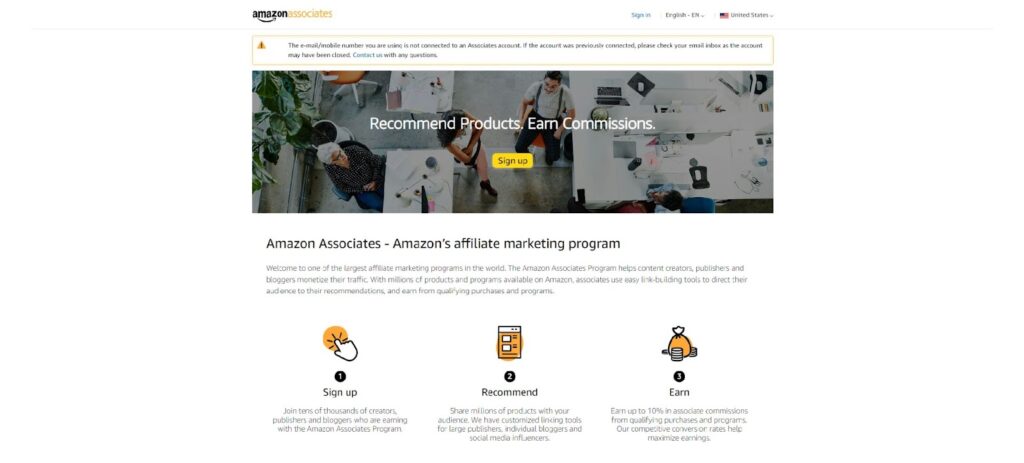
How To Measure The Impact Of SEO & External Marketing Efforts
To measure the impact of your SEO and external marketing efforts on organic growth, consider the following metrics:
– Keyword rankings: Monitor your product listings’ rankings for targeted keywords in Amazon’s search results. Use SEO tools or Amazon-specific keyword-tracking software to track your keyword positions over time.
A higher ranking signifies improved visibility and the potential for increased organic traffic and sales.
– Click-through rate (CTR): Analyze the CTR for your product listings in search results. A higher CTR indicates that your title, images, and other elements are enticing customers to click and explore your products.
Optimize your listings to improve CTR, such as using compelling titles, high-quality images, and engaging product descriptions.
– Conversion rate (CR): Evaluate the conversion rate of your product listings, which measures the percentage of visitors who make a purchase. A higher conversion rate indicates that your listings effectively convert organic traffic into sales.
Optimize your product listings by highlighting unique selling points, providing clear and detailed product information, and showcasing positive customer reviews to increase conversion rates.
How To Drive Organic Traffic & Optimize Sales Funnels
To drive organic traffic and optimize sales funnels for Amazon organic growth, consider the following strategies:
– Optimize product listings: Invest time and effort in optimizing your product titles, bullet points, product descriptions, and backend keywords.
Conduct keyword research to identify relevant and high-volume keywords and incorporate them naturally into your listings. Focus on providing valuable information, addressing customer pain points, and showcasing unique selling propositions to attract and convert organic traffic.
– Enhance product imagery: High-quality and visually appealing product images play a crucial role in capturing the attention of potential customers.
Invest in professional product photography that showcases your products from different angles and highlights their key features.
Use lifestyle images to demonstrate product usage and benefits, helping customers visualize themselves using your products.
– Encourage customer reviews: Positive customer reviews can significantly impact organic growth. Encourage satisfied customers to leave reviews by sending follow-up emails after their purchase, offering incentives for reviews, or utilizing Amazon’s Early Reviewer Program.
Respond to customer reviews promptly, addressing any concerns or questions raised. Positive reviews not only influence potential customers but also contribute to improved search rankings and visibility on Amazon.
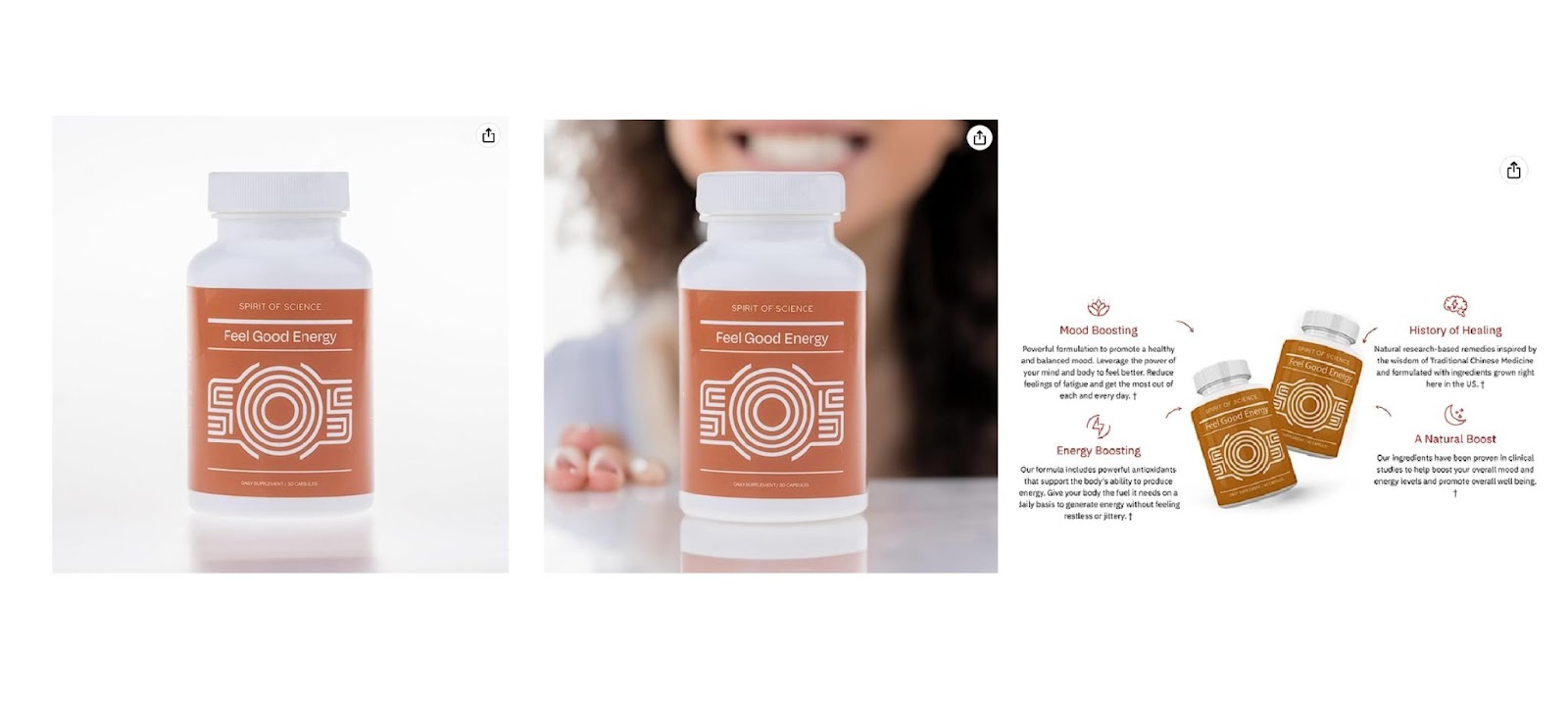
Use Amazon’s Reporting Tools To Track & Analyze Organic Growth
Amazon provides various reporting tools and data insights to help you track and analyze your organic growth. Leverage these resources to gain valuable insights and make data-driven decisions:
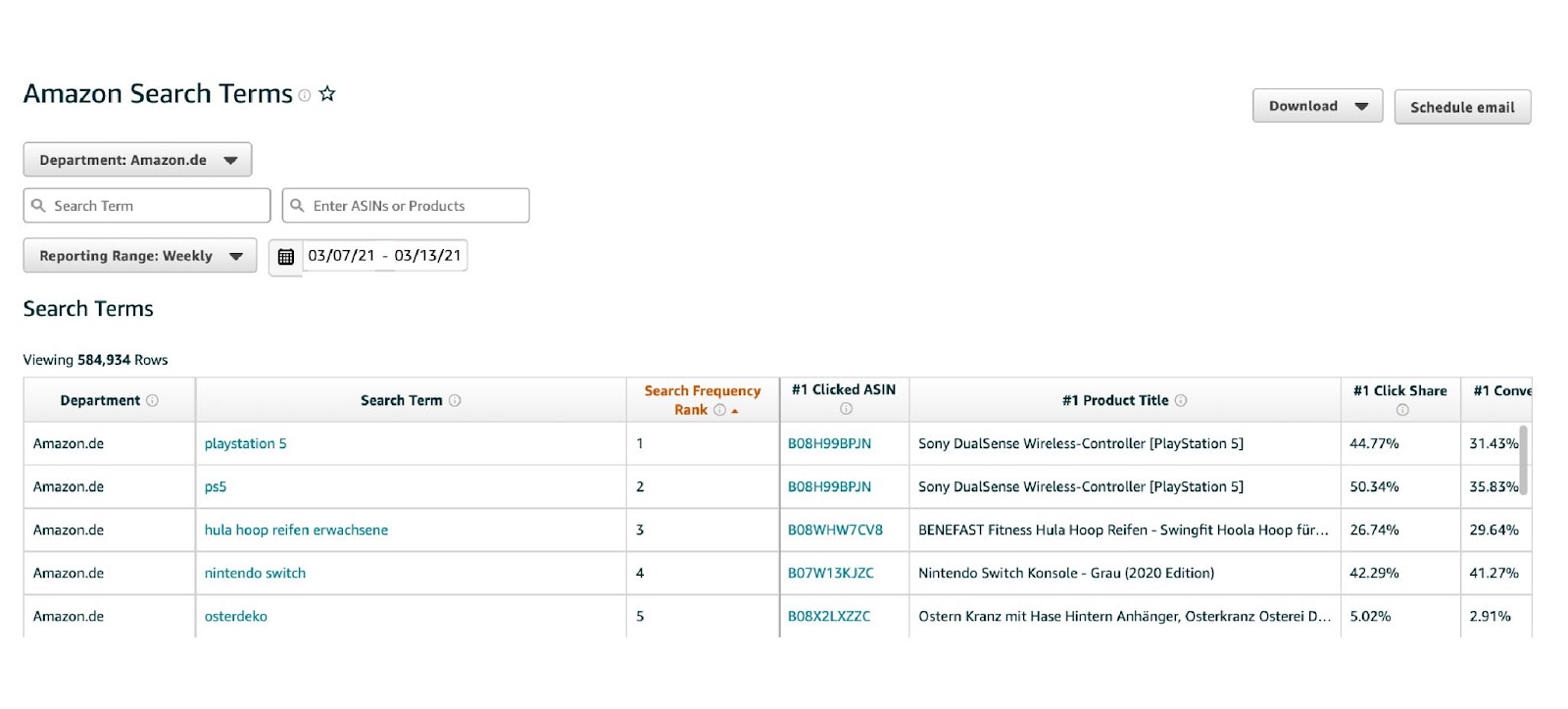
– Amazon Search Term Reports: Use these reports to analyze the keywords customers use to find and purchase your products. Identify high-performing keywords and incorporate them into your product listings for better visibility.
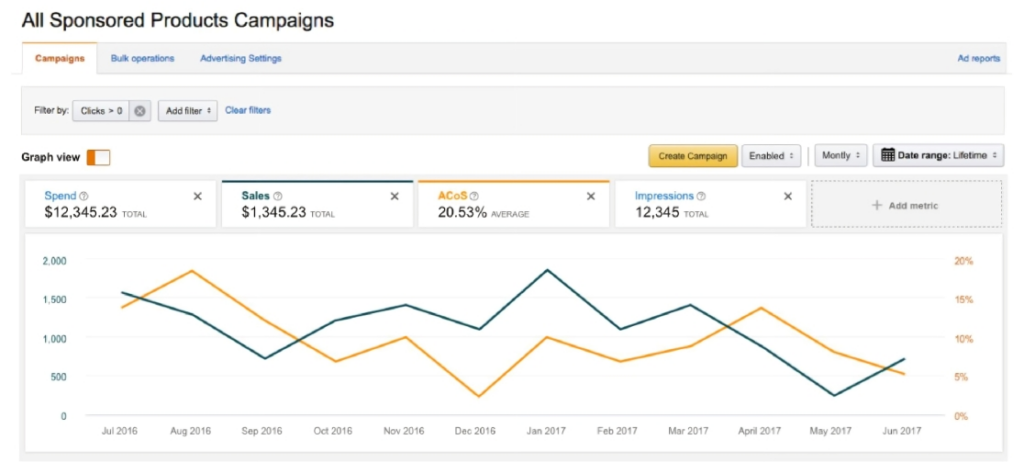
– Advertising Reports: Analyze the performance of your sponsored ads campaigns. Monitor the click-through rates, conversion rates, and return on ad spend (ROAS) to assess the effectiveness of your advertising efforts in driving organic growth.
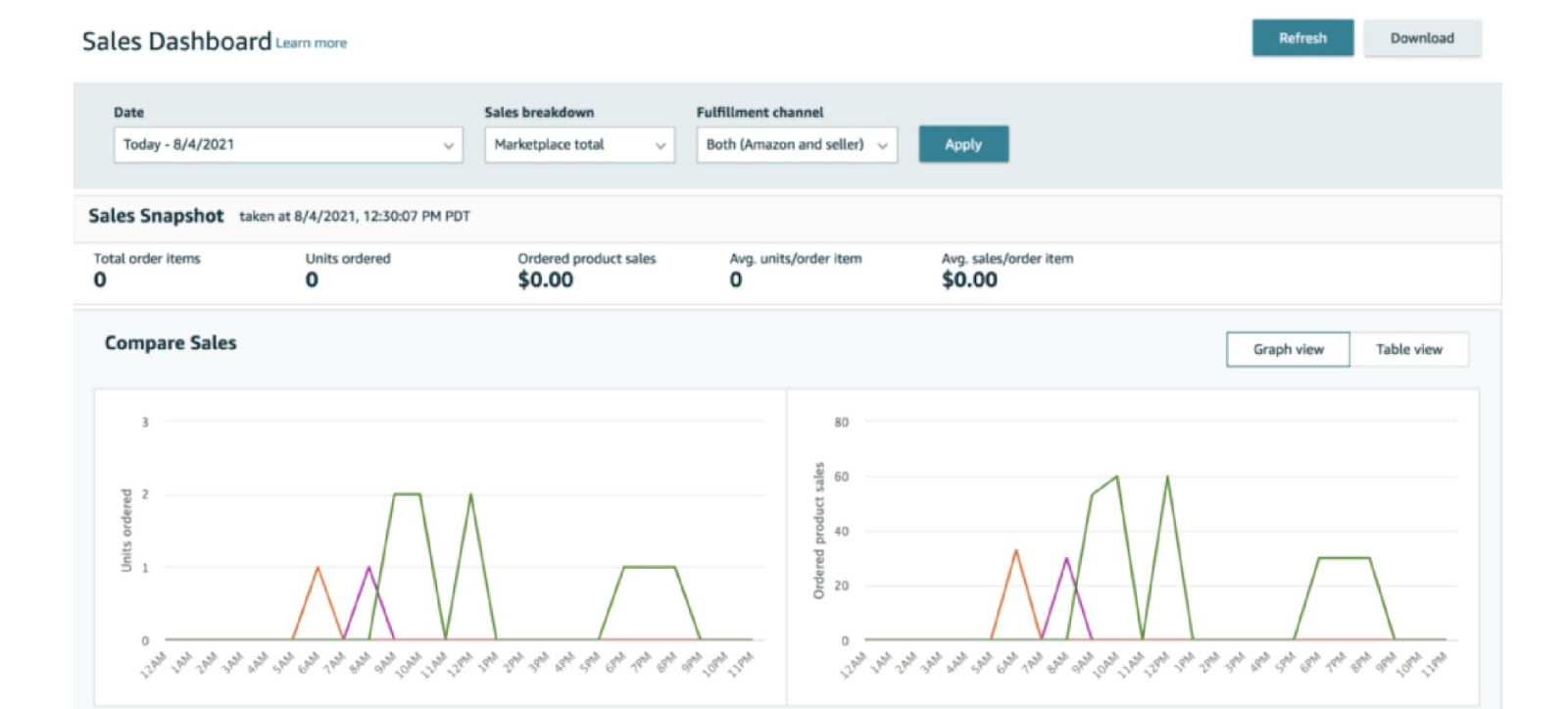
– Sales Reports: Dive into your sales reports to understand trends, patterns, and seasonality. Identify your best-selling products, evaluate the performance of new product launches, and make informed inventory management decisions.
Conclusion
Tracking and analyzing key success metrics are essential for measuring and optimizing organic growth on Amazon.
By monitoring conversion rate, click-through rate, customer reviews and ratings, buy box percentage, customer lifetime value, organic traffic, and sales, you can gain valuable insights to make data-driven decisions and drive long-term success.
Remember, organic growth on Amazon requires a strategic approach, continuous SEO optimization, and staying ahead of the competition.
To receive years-worth selling tips and stay updated with the latest trends and strategies, don’t forget to subscribe to Eva’s Newsletter. Sign up now and unlock a wealth of knowledge delivered straight to your inbox. Subscribe today and take your Amazon business to new heights!

